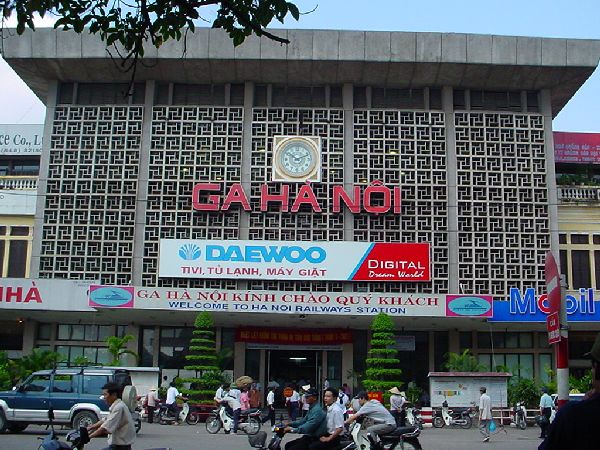Vietnam by train
Travelling by train is an excellent way to explore Vietnam- local trains are affordable, fairly comfortable and safe.
Vietnam’s main railway track – the North-South Railway- runs along the length of the country, connecting Hanoi with Ho Chi Minh City. This line was completed by the French in 1936 in what was then French Indochina but services stopped in 1954 when Vietnam was divided into north and south. It was only in 1976 when trains starting running again.
 From Mouagip, Wikipedia Commons
From Mouagip, Wikipedia Commons
Although this is popularly referred to as the ‘Reunification Express’, the accurate term would be the Reunification Railway. There is no specific express or train which takes this journey- many trains, in fact, ply this route every day.
The carriages on Vietnamese trains are from old Russian trains- my compartment on train no. SE3 from Hanoi had the same design as the one I travelled in from Moscow to Irkutsk. The door had the same lock and the upper berths had the same steps for climbing up. One welcome addition in the Vietnamese compartment which the Russian one didn’t have was a plug point, located under the table between the two bottom berths.

Ga Ha Noi, or Hanoi Train Station (‘ga’ as in the French ‘gare’). The building was constructed during colonial times but the concrete section with the clock and name of the station was built after the original facade was destroyed when the Americans bombed North Vietnam in December 1972.
My train departed from Hanoi Train Station at 11 pm on the dot. There were four berths in my compartment but there were five people in it- me, a former pilot from Japan called Seto, a young student and interestingly, a couple who somehow managed to squeeze into the berth above mine.
The train reached Hué the next morning at about 11.20. Hué is an ideal place to break the journey- it was the capital of Vietnam from 1802 to 1945 and its beautiful city ruins are protected as a UNESCO World Heritage Site.
After Hué comes Da Nang. The scenery from Hué to Da Nang is one of the highlights of the journey along the North-South Railway. Here, the railway track runs along the coast, so you’ll get to see some truly lovely views of the cliffs fronting the South China Sea.
The windows in the compartments don’t open, so if you want to take photographs, go out and look for a window that will. The train attendant wasn’t too amused when I kept opening the windows, so if you try the same thing, be prepared to get an earful from them.
My train reached Ho Chi Minh City (still stated as ‘Saigon’ on train tickets) at 5am, three days after I set out from Hanoi. One thing I admire about the Vietnamese is how early they rise, whether it be to cycle or to jog, and even at this hour, there was a long row of taxis waiting at the train station.
The Reunification Railway does more than connect the north with the south. If you’re exploring the country and don’t want to take local planes, take the trains instead. Simply by taking this route and stopping at the right towns long the way, you’ll get to experience Vietnam’s highlights and some of the most beautiful scenery in Southeast Asia.
*My train ticket from Hanoi to Saigon (bottom berth in a soft sleeper) cost 1,760,000 dong (US$85/RM260) on the SE3. You can ask your hotel or guesthouse to buy the ticket for you, but they’ll charge a fee.
© 2012 – 2014, Anis. All rights reserved.












Great! Must get more tips from you:)
This is great! Ive been to Hanoi once, i remembered visiting the mosque where the fence is made up of bamboo, and visiting Halong Bay. I think I will visit again using your railway route. My question is do we buy a ticket, and we can stop and go out and come back on a train with the same ticket?
Hi Asyraf- what you’re referring to is an open ticket, ie. you have a train ticket from Hanoi-Ho Chi Minh City, but you want to get down at Hue (for example) and resume the journey on the same ticket to HCMC. I’m afraid the answer is no, we can’t get on and off on the same ticket like that. How fantastic it would be if we could! If you to want break your journey, you’ll need separate tickets for each leg ie. Hanoi-Hue, Hue-Da Nang, and so on. I hope this answers your question, but feel free to ask me anything else. This is a wonderful ride and I’m sure you’ll enjoy it!
p/s. I never visited the mosque in Hanoi, though I went to the one in HCMC 🙂